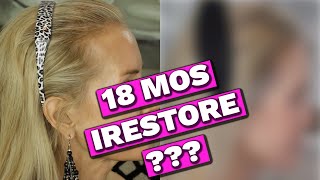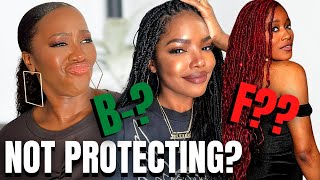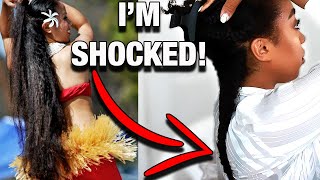3 Herbal Shampoo Recipes For Hair Growth & Damaged Hair

Your days as a natural have been spent searching for new and improved hair products that will give you healthy, long, thick hair, but where you should have been looking all along is in your backyard.
Well, maybe not your backyard, but these natural herbal ingredients do grow in some people’s backyards (and very fortunate they are!).
Hopefully by now, you’ve strayed far, far away from conventional shampoos and conditioners that contain harmful ingredients like:
Sodium Lauryl Sulfate/Sodium Laureth Sulfate
Formaldehyde
Parabens
Phthalates
DEA/NDEA
Propylene Glycol
Tocopheryl Acetate
Iodopropynyl Butylcarbamate
These are just as scary as they sound, which is why we have to switch out the chemically-made poos and conditioners and opt for natural ingredients. The same goes for your leave-ins and moisturizers.
Turning back to nature is your best bet to reducing your exposure to toxins that invade today’s beauty products. And one way to do so is to either purchase from a brand that is all-natural, or to make your own beauty products.
The issue I have with a lot of brands is that they lack certain ingredients I want, so it makes it difficult to find exactly what I need. That’s the beauty of making your own stuff.
About the ingredients used in the herbal shampoo recipes
Knowing what you’re putting on your body is important for maintaining its health. If you’ve never heard of the following ingredients or aren’t sure why they’re being used, this will help get you acquainted with their hair benefits.
Amla: Also goes by the name gooseberry or amalaki. It is filled with essential fatty acids needed to moisturize your hair. It’s a natural hair conditioner, so it removes dryness and dandruff.
Being rich in flavonoids, proteins, minerals and vitamins* also allows it to assist with hair growth and prevention of hair fall. Lastly, its antioxidant properties strengthen the roots of your hair, which further reduces thinning and balding. A lot of people witness more natural bounce and shine when used over a period of time.
Aritha*: Can be found under the name soap nut or reetha. This is commonly used for cleaning products because it’s a natural saponin, which allows it to create suds.
However, in this remedy, it’s being used because it can gently cleanse your scalp, getting rid of microorganisms that can bring about infections. It doesn’t irritate the scalp, so it’s great for those with sensitivities. Aritha* also aids in nourishing your hair, making it smooth, healthy and shiny.
It also helps with restoring your hair’s natural texture. This is all made possible by the fact that it helps your hair retain its natural oils*, rather than strip them away. So if you suffer from dandruff, this stuff will get rid of that too!
Shikakai: This is what makes the following recipes a shampoo. It has a natural low pH level. It helps your hair to retain the oils* it produces naturally, making your hair healthy and lustrous.
It also acts as a conditioner and strengthens your strands to prevent hair loss and promote volume. It’s also great for your scalp, eliminating dandruff and protecting it from infections.
Hibiscus: This flower does wonders for your hair and scalp — boosting circulation to promote hair growth, preventing split ends, keeping gray hairs at bay, thickening your hair, mildly cleansing your hair and eliminating toxins.
Neem*: This helps with scalp dryness, itchiness, dandruff and hair fall. It also helps to promote hair growth and conditions your locks. It allows your hair to lock in its natural moisture, preventing dryness. People have also used this to treat baldness and keep their scalp overall healthy.
Brahmi*: Ideal for folks who have chronic hair problems, like thinning and hair loss. It helps to prevent this by strengthening your hair roots. It can also help with premature graying and clearing away dandruff.
Next Page > The 3 DIY recipes
DIY Recipes for herbal shampoo and conditioner
I will go into three recipes that you can use to cleanse and condition your hair. These three recipes are based on various hair and scalp conditions, but can still be used by anyone.
Recipe for Hair Growth, Thinning & Balding

Share the graphic on your website:
1 tbsp amla
1 tbsp shikakai*
1 tbsp aritha*
1 tb brahmi*
Recipe for Frizz & Dry Hair and Scalp

Share the graphic on your website:
1 tbsp amla
1 tbsp shikakai
1 tbsp aritha*
1 tbsp neem*
Recipe for Frizz & Damaged Hair

Share the graphic on your website:
1 tbsp amla
1 tbsp shikakai*
1 tbsp aritha
1 tb hibiscus*
Directions to make your herbal shampoo
Mix the powders with filtered water until it becomes a thin paste. You don’t want it to be too thick. Spritz your hair with a water bottle until all of your hair is damp.
Section off your hair and apply the paste as you would a relaxer, from roots to ends. If you have a lot of hair, you may want to double or triple the ingredients.
Keep the paste in your hair for at least 30 minutes — most leaving it in for as long as an hour. Don’t massage the paste into your scalp because it may be abrasive and cause damage to your hair shaft. Don’t brush or comb your hair either.
Once done, rinse your hair with cool water. You don’t have to condition your hair, since this acts as a cleanser and a conditioner. You can proceed to using oils, leave-in or other products you use for your hair normally. You can store the leftovers in the freezer, just make sure to use within 1-2 months.




